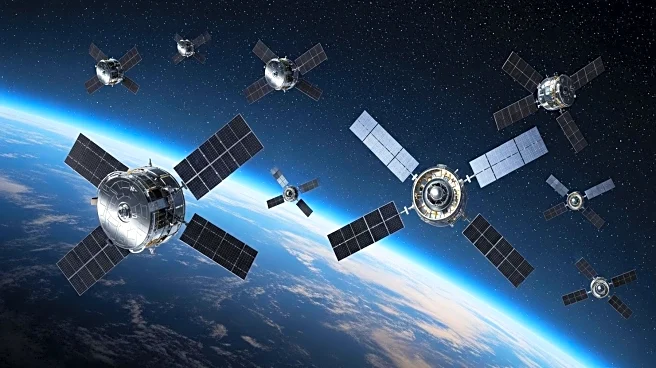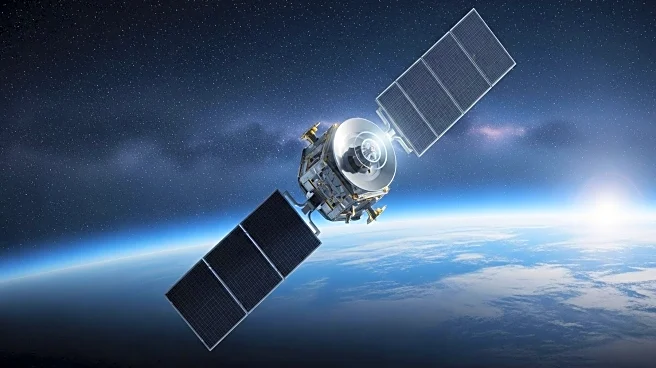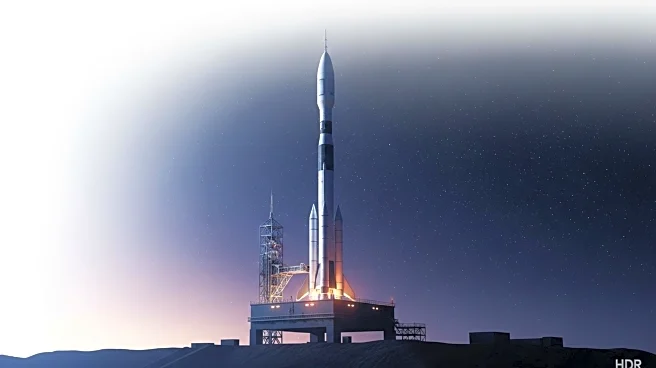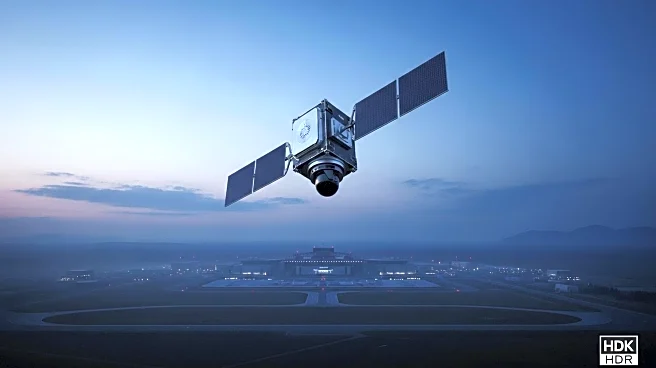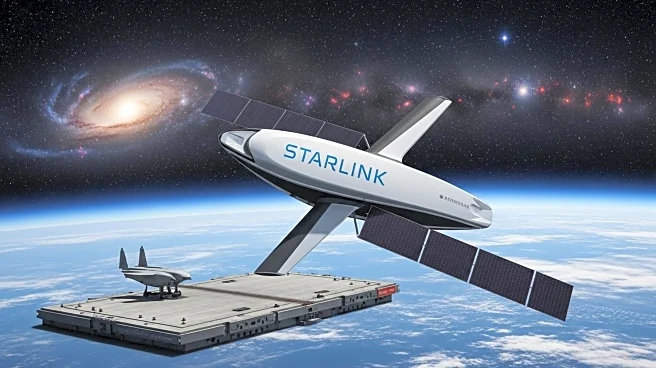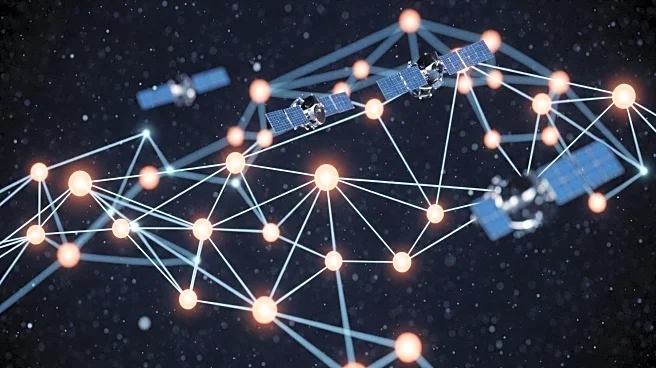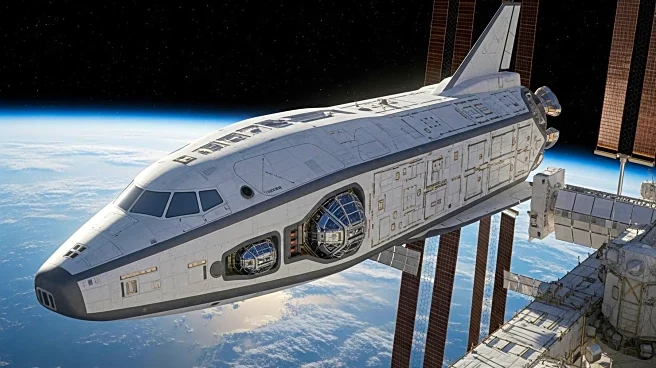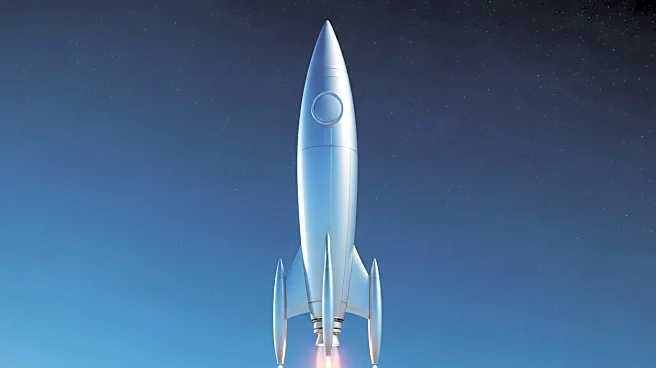What's Happening?
SpaceX successfully launched 24 Starlink broadband satellites into orbit from Vandenberg Space Force Base in California. The launch took place at 1:55 p.m. EDT on September 13, 2025, using a Falcon 9 rocket. The rocket's first stage landed in the Pacific Ocean on the SpaceX drone ship 'Of Course I Still Love You' approximately 8.5 minutes after liftoff. This marks the 28th launch and landing for the booster designated B1071. The upper stage of the Falcon 9 continued to transport the satellites to low Earth orbit, where they are scheduled to be deployed 62.5 minutes after liftoff. This launch contributes to the Starlink network, which now includes over 8,300 active satellites, making it the largest satellite constellation ever assembled.
Why It's Important?
The expansion of the Starlink network is significant for global broadband connectivity, particularly in remote and underserved areas. By increasing the number of satellites, SpaceX aims to enhance internet access worldwide, potentially reducing the digital divide. This development is crucial for industries relying on internet connectivity, such as telecommunications, remote work, and online education. Additionally, the successful reuse of the Falcon 9 booster demonstrates SpaceX's commitment to cost-effective and sustainable space operations, which could influence future space exploration and satellite deployment strategies.
What's Next?
SpaceX is expected to continue its frequent Starlink launches, with plans to further expand the satellite network. This ongoing expansion may lead to improved internet service quality and coverage, attracting more users and potentially increasing competition in the broadband market. Stakeholders, including governments and telecommunications companies, may need to address regulatory and infrastructure challenges associated with satellite internet services. Additionally, SpaceX's advancements in reusable rocket technology could pave the way for more ambitious space missions and collaborations.
Beyond the Headlines
The growth of satellite constellations like Starlink raises questions about space traffic management and the long-term sustainability of satellite operations. As the number of satellites increases, concerns about space debris and collision risks become more pressing. International cooperation and regulatory frameworks may be necessary to ensure safe and efficient use of space resources. Furthermore, the expansion of satellite internet services could impact traditional broadband providers, prompting shifts in market dynamics and consumer preferences.


